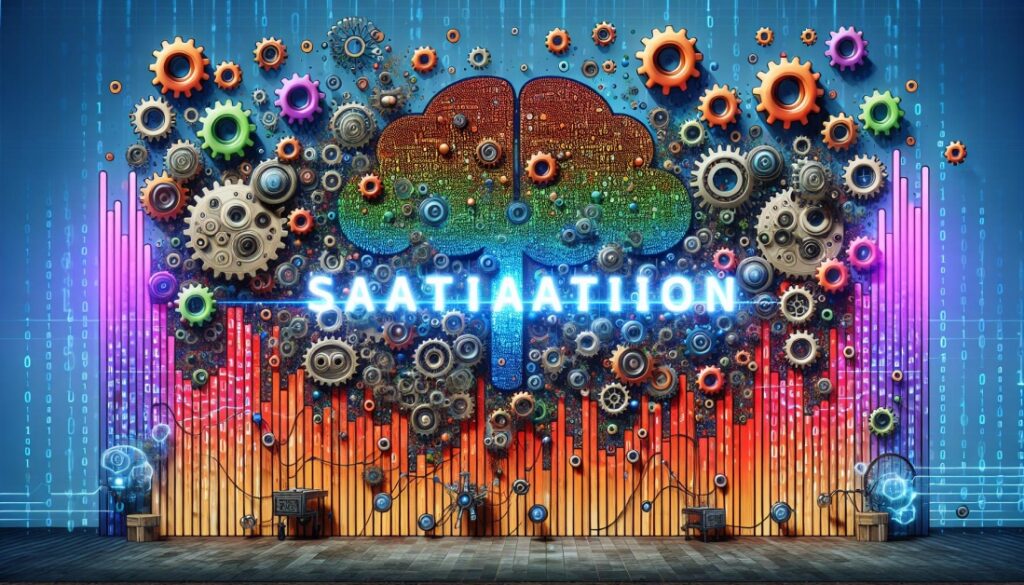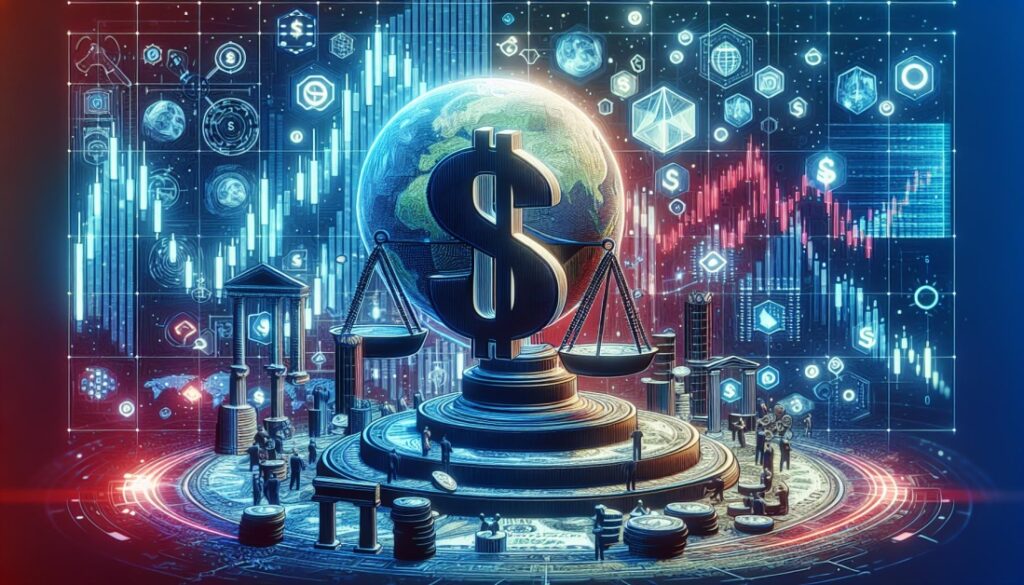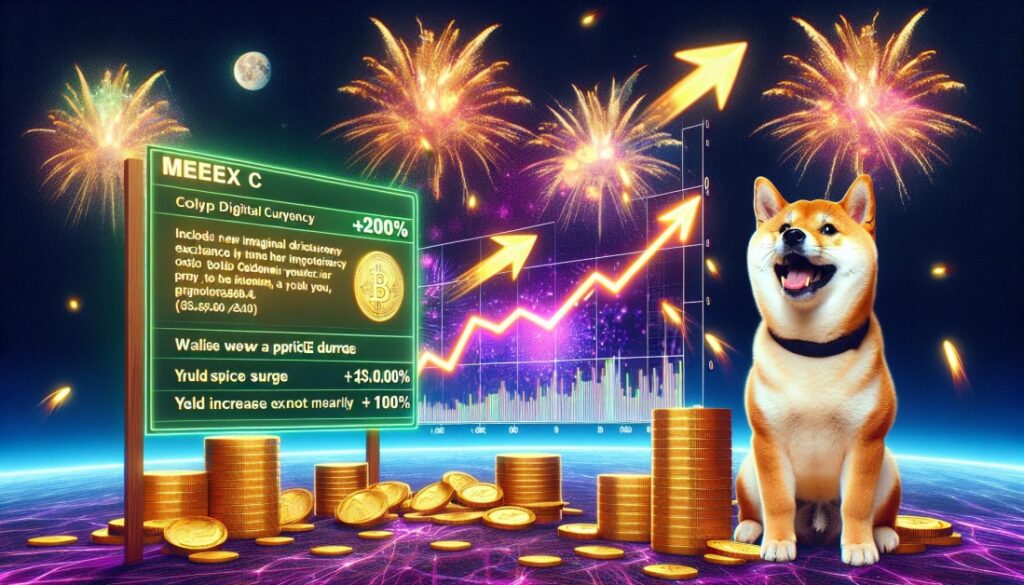Artificial Intelligence Boom: Is the Market Saturated?

Artificial intelligence (AI), from voice assistants and algorithms that predict global market trends to voice assistants, is experiencing explosive growth. As with any new technology, innovation can become over-saturated.
In recent months, the rapid growth of AI solutions and tools has sparked debate among investors and industry experts. Are we at the peak of the golden age of AI or are we on the verge of a saturated market?
The technology landscape has always been dynamic in nature, with innovation often outpacing the adaptability of the market.
History of the Tech Boom and Bust
There was a dot-com boom in the late 1990s. This period was marked by exuberant optimism about Internet-based businesses. Many startups that had little more than an online presence achieved staggering valuations, only to crash spectacularly after the bubble burst.
In 2017, initial coin offerings (ICOs) – a fundraising method in which new cryptocurrency projects sell their underlying tokens – exploded across the globe.
The potential of decentralized and blockchain technologies caused a lot of excitement during this time. The excitement of some projects often overshadowed their feasibility and practicality.
As a result, investors invested in companies with limited real utility or, in certain cases, no real connection to cryptocurrency.
Google’s new AI policy opens the door to AI-produced content
A notable example of this was the “blockchain” naming trend in 2017, as “Long Island Iced Tea Corp.,” a soft drink company with little or no Connection to the blockchain, was renamed “Long Blockchain Corp.” The company changed its name to Long Blockchain Corp. in an attempt to capitalize on the hype surrounding blockchain.
After this renaming, the company’s stock price skyrocketed. Shares rose an incredible 275% in one day. The company’s stock price rose despite making no significant changes to its business model. This showed the speculative nature of the market at the time and showed how far companies were willing to go to get in on the blockchain wave.
However, the enthusiasm was short-lived. Bitcoin.com reports that as of February 2018, almost half of 2017 ICOs were failures.
The impact of AI goes beyond speculation.
The dot-com bubble and the blockchain bubble were characterized by speculation and, at times, a lack of real value. However, the AI wave has a fundamentally different character.
Microsoft and Google are not only working on AI, they are also integrating it into products and services that millions of people use every day. They demonstrate real-world applications that actively improve the industry.
Michael Koch, co-founder and CEO of HubKonnect – a platform that uses AI to run local marketing campaigns for stores – spoke to AskFX.
“The AI market is saturated because people who failed in crypto and thought they were techies are now moving on to the next hot technology – AI. But there are real leaders and builders of AI. It is important that there are advanced eyes to help people continue to expand AI and benefit from its development.”
Google Bard’s generative AI attracted more than 140 million visitors in May alone. Sports teams get real-time data and AI chatbots become faster and cheaper.
The Modern AI Gold Rush
The allure of artificial intelligence has led to an explosion of AI-driven startups, tools and solutions. According to Precedence Research, the global artificial intelligence market is expected to reach $538 billion by 2023.
In 2023, venture capital (VC), a key source of funding in the AI industry, has played a key role. PitchBook data shows that generative AI startups raised more than $1.7 billion in the first quarter of 2023. An additional $10.7 billion has been announced but not yet completed.
Google-backed Anthropic has raised $450 million, at a reported valuation of $5 billion. Builder.AI has raised $250 million. Mistral AI raised $113 million in just a few days without even having a product. The influx of VC being thrown at these AI startups like wildfire can be compared to the ICO crash. In this case, there was a lot of excitement, but no actual proof of feasibility or use cases. The real success stories and diverse use cases of AI set them apart. ChatGPT is a good example of AI in action. It reached 100,000,000 users in just two months.
Some believe that the AI market is overheated due to its rapid growth and high valuations. Marko Kolanovic believes that the AI market has reached its saturation point. According to Forbes, Kolanovic said that the recent market surge is the result of an “AI bubble.” He also explained that the hype surrounding the technology was due to the “popularization” of chatbots, which often cannot answer basic questions.
Leif-Nissen Lundbaek is the founder and CEO of the generative AI company Xayn. He disagrees and believes we are only at the beginning. He told AskFX:
“The AI market is far from saturated. Companies have tested their products here and there. Some proofs of concept are already being realized. “The real cases of large-scale production are just beginning or are yet to come.””
The balance between saturation and innovation
Concerns about a possible saturated market have been raised by the sheer number of companies entering the AI sector . AI is now used as a core functionality by companies around the world. The conditions have been created for many other companies to follow. From 10Web’s AI-powered website builder to RainbowAI’s weather app and ICarbonX’s AI that provides personalized health analytics to SherpaAI’s virtual personal assistant.
Lundbaek acknowledges that the influx of new companies in certain areas can lead to market saturation, but does not consider this to be a relevant problem. He states: “The business-to-business market is still in its infancy, although AI has been around for some time.” Most companies only use AI and machine learning for small, visible projects that are simple and low risk can be implemented. They don’t use it on a large scale.
Koch believes that while the newcomers may create the impression of an oversaturated AI industry, he sees initial saturation as necessary to encourage future advances.
He said: “AI will not be saturated because we are currently at the first exit of the AI highway. The AI industry is crowded because other industries want to get in, but there are a few companies that are already there. We are ahead of the curve and have been working in the AI space for years. To drive innovation, there will be saturation at the grassroots level. However, there are elite companies and players that are leading the future of AI.”
AI Market Dynamics: A Reflection
Market saturation has been discussed due to the rapid growth of AI, its high valuations and the influx of new players. The dot-com bubble and blockchain hype are examples of past technology bubbles that illustrate the dangers of unbridled growth.
Magazine: Blockchain Detectives: Mt. Chainalysis was born after the collapse of Mt.
AI is far from reaching its full potential. The tangible impact of technology speaks to its practical, transformative nature.
The AI market has many facets. The challenge with any new technology is to find a balance between rapid development and sustainability.




